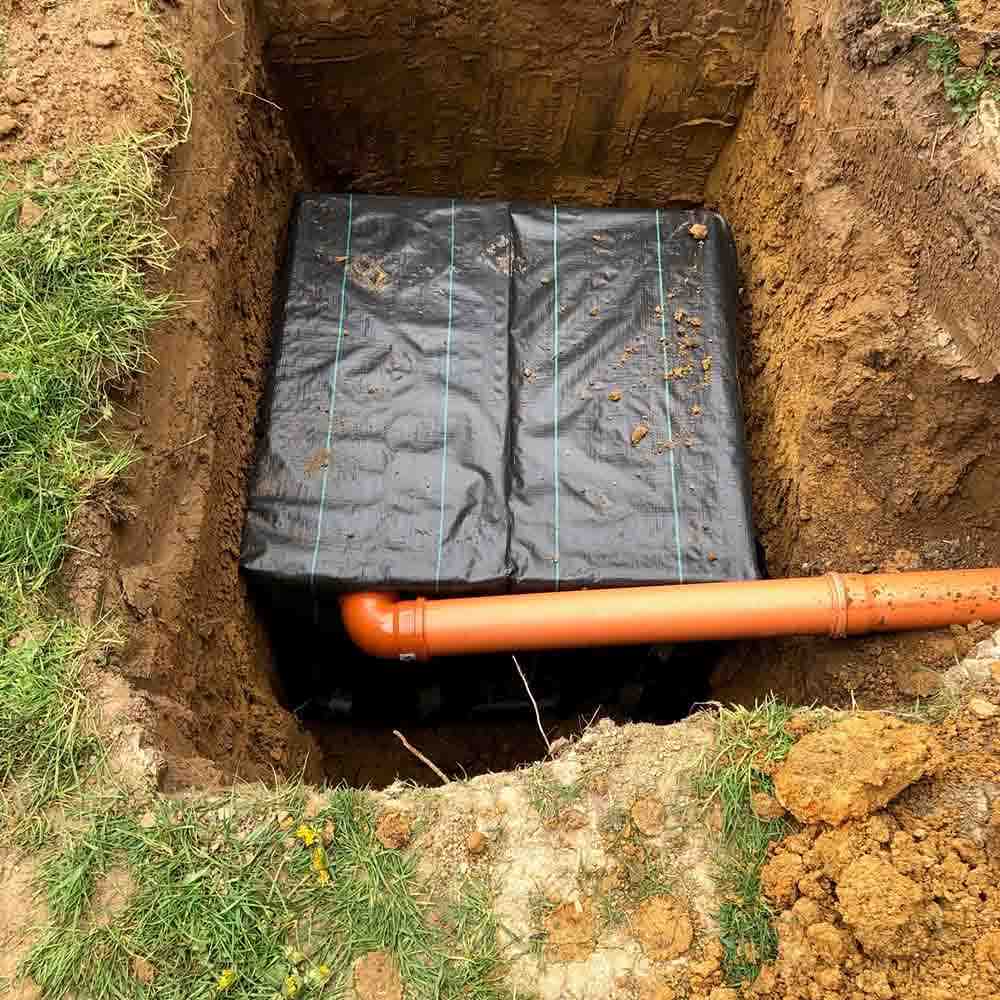- Broadstone
- Christchurch
- Stoughton
- Southampton
A soakaway drainage system is an underground pit which is built to collect run-off from the surface. It then stores the water and releases it slowly into the soil through absorption. It not only makes your property self-containing for the rainwater but also increases the overall stability of the property by eliminating any chances of flooding.
Materials and methods of installation for soakaway drainage have developed considerably over the years. Modern soakaways are more stable, durable and efficient than ever. However, if not installed properly, they can prove to be a waste of time and money.
A percolation test is the most important factor to consider before installing a soakaway on your property. This test is carried out to determine the percolation rate of the soil. There are some soil types that are not good for installing a soakaway due to their extremely low rate of percolation. So make sure you hire a professional to carry out a percolation test before you go any further.
After the percolation test, you will need to decide the design parameters, such as how deep and wide your soakaway drainage is going to be. You will need the area and pitch angle of the roof to determine the expected magnitude of the rainwater that your soakaway is going to receive. Make sure that you do not dig deeper than required because it can affect the stability of the soil.
Now is the time to decide what permeable material you want to use for your soakaway pit. Traditional materials used to fill the soakaway have been gravel or rubble. But they needed a lot of maintenance to keep them from being blocked. On the other hand, the new soakaway crates offer more storage capacity and much less maintenance for them to serve all year round.
Make sure you engage professionals to help you install your soakaway to make sure that the job is done properly. The installation method of soakaway drainage can be divided into the following steps:


Fast Drains have highly experienced and specialised teams to take care of any kind of drains-related services. We provide complete services from design considerations to the installation of the soakaway drainage with a highly affordable price tag. If you are looking for a reliable and expert service to install a soakaway at your residential or commercial property, you can contact us today.
A soakaway drainage refers to the construction of an underground pit and then filling it with permeable material to let the rain or surface water percolate through it and into the soil.
Yes, according to the building regulations introduced in 2001, it has become mandatory to construct soakaways or any similar structure for all new properties.
A soakaway should be constructed at a distance of at least 5 metres from the property.
A soakaway should be between 1.3m and 1.6m in depth. Please note that the deeper you dig, the more it can compromise the stability of your property.
Yes, the soakaway needs to be emptied and maintained regularly in order for it to function properly and prevent it from blocking due to the accumulation of dirt or any other material.
Areas we cover
Basingstoke | Southampton | Guildford | Bournemouth | Poole | Portsmouth | Crawley | Dorchester | Peterborough | Newbury | Christchurch | Gillingham | Swindon | Winchester | Reading | Oxford | Slough | Abbotswood | Sterte | Ascot | Stoughton | Broadstone.